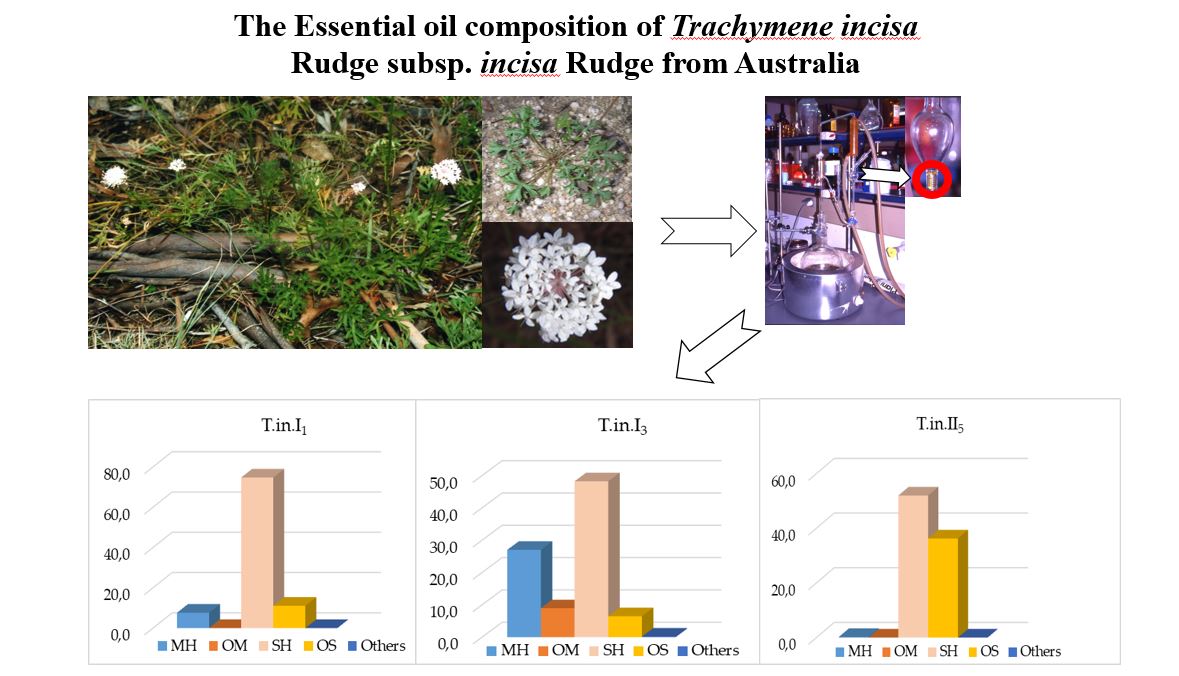Article
Version 1
Preserved in Portico This version is not peer-reviewed
The Essential Oil Composition of Trachymene Incisa Rudge Subsp. Incisa Rudge From Australia
Version 1
: Received: 23 February 2021 / Approved: 24 February 2021 / Online: 24 February 2021 (17:10:21 CET)
A peer-reviewed article of this Preprint also exists.
Palá-Paúl, J.; Copeland, L.M.; Brophy, J.J. The Essential Oil Composition of Trachymene incisa Rudge subsp. incisa Rudge from Australia . Plants 2021, 10, 601. Palá-Paúl, J.; Copeland, L.M.; Brophy, J.J. The Essential Oil Composition of Trachymene incisa Rudge subsp. incisa Rudge from Australia . Plants 2021, 10, 601.
Abstract
Trachymene incisa subsp. incisa is an Australian endemic taxon that varies greatly in the abundance and length of the leaf trichomes. The essential oil composition of five populations of this subspecies, three corresponding to the typical glabrous form and two of the particularly hairy variant, has been analyzed in an attempt to determinate if that variability is also reflected in their composition. The oils have been extracted by hydrodistillation and analysed by Gas Chromatography (GC) and Gas Chromatography coupled to Mass Spectrometry (GC-MS). The essential oils of T. incisa subsp. incisa were characterized by the high amount of sesquiterpenes that were the major fraction. The sesquiterepene hydrocarbons were significantly higher in the hairy variant in comparison to the glabrous one. According to the main compound three different chemotypes were found: I.- -selinene + bicyclogermacrene and II.- -bisabolene + -pinene for the typical glabrous variant and III.- bicyclogermacrene + -caryophyllene for the hairy variant.
Keywords
Trachymene incisa; Apiaceae; Chemotype; -Selinene; Bicyclogermacrene; -Bisabolene; -Pinene; -Caryophyllene; Essential oil; Chemical composition.
Subject
Biology and Life Sciences, Anatomy and Physiology
Copyright: This is an open access article distributed under the Creative Commons Attribution License which permits unrestricted use, distribution, and reproduction in any medium, provided the original work is properly cited.
Comments (0)
We encourage comments and feedback from a broad range of readers. See criteria for comments and our Diversity statement.
Leave a public commentSend a private comment to the author(s)
* All users must log in before leaving a comment







